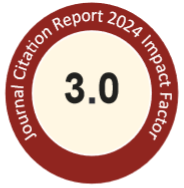Abstract
Medical institutions usually ensure the quality of medications by reviewing manufacturing documents and examining the appearance of the drugs. However, these mechanisms may not be robust enough to confirm the quality of the medications used. To evaluate the quality of medicines used at a medical center in Taiwan, a total of 190 new or formulary drugs were analyzed in a period from April 2004 to June 2010. For each medication, at least one test in the pharmacopeia or pharmaceutical manufacturers' specifications was chosen according to the dosage form or clinical requirement. A total of 437 tests were conducted. The overall failure rate was 5.8% (11/190) among all the drug products tested. Higher failure rates were seen in drugs with special dosage forms (12.5%) or dubious quality (7.7%). Although the failure rates of domestic brand-name drugs (9.1%, 2/22) and imported generic drugs (16.7%, 1/6) appeared to be higher than those of imported brand-name drugs (0%, 0/29) and domestic generic drugs (6.0%, 8/133), there was no significant difference among the various groups by Fisher's exact test due to the small sample size. Nevertheless, this study shows that there are still some substandard medicines in the market. The quality of imported brand-name drugs was shown to be unquestionable. The quality of domestic generic drugs was found to be equivalent to that of domestic brand-name or imported generic drugs. In-house laboratory analysis is an effective method that can be used together with the review of manufacturing documents to ensure the quality of drugs used at health-care institutions.
Recommended Citation
Yang, H.-L.; Shen, L.-J.; Huang, C.-F.; Lin, C.-Y.; Chen, W.-H.; Hsieh, Y.-T.; and Wu, F.-L.L.
(2012)
"Are brand-name drugs of better quality than generics? Research at a Medical Center in Taiwan,"
Journal of Food and Drug Analysis: Vol. 20
:
Iss.
1
, Article 9.
Available at: https://doi.org/10.38212/2224-6614.2066

